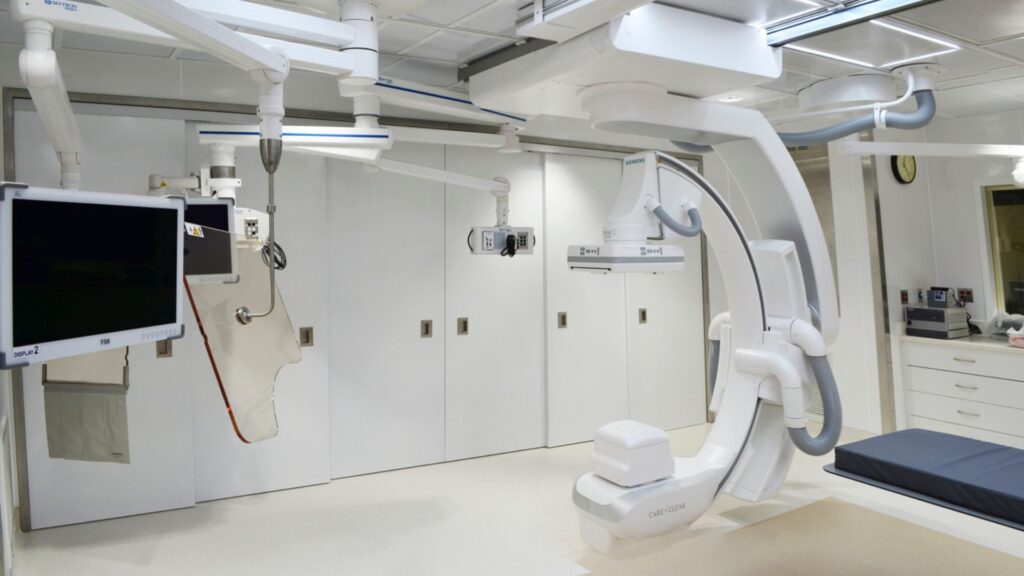Healthcare renovations or projects come with inherent tensions—balancing patient care, efficiency, and financial constraints. | Photo Credit: Bill Lindhout
By Vince Mattina
Healthcare renovations or projects come with inherent tensions — balancing patient care, efficiency and financial constraints. While facilities must modernize to support evolving models of care, these efforts are often constrained by budget limitations and the need to maintain uninterrupted operations. These challenges are amplified in renovation projects, where existing conditions and operational needs add complexity.
The key to a successful renovation isn’t just experience and technical expertise — it’s about fostering open communication and aligning all stakeholders under a shared vision. See Part I of this article to learn about effective communication, aligning budgets with design priorities and minimizing disruptions to care. Continue reading to learn other tips and best practices for ensuring a smoother, more successful renovation.
Optimizing Space for Flexibility and Efficiency

Photo Credit: Fishbeck Staff
Space is a premium in healthcare environments. Optimizing layouts ensures efficiency, enhances patient experience and accommodates future growth.
One approach is analyzing existing floor plans to identify opportunities for improvement. For example, converting semi-private rooms into private ones improves patient comfort while allowing for increased capacity during high-demand periods, such as pandemics.
A key element of a backfill project at a major hospital includes the conversion of existing semi-private (double-occupancy) rooms into single-occupancy private rooms, aligning with best practices for patient privacy, infection control and individualized care. However, these rooms are being designed with the flexibility to safely revert to double occupancy if needed — offering a resilient solution for future patient surges. This balance between daily operational efficiency and emergency scalability was achieved through close collaboration with hospital leadership and clinical staff.
Similarly, integrating secondary clinics within emergency departments can reduce congestion, ensuring minor-acuity patients receive timely care without occupying critical ER beds.
Multifunctional spaces further enhance flexibility. Consultation rooms that double as physician touchdown areas or exam rooms that accommodate multiple specialties maximize space utilization and minimize costly expansions.
Strategic department alignment also improves efficiency. Positioning support functions closer to patient care areas reduces unnecessary movement, fosters collaboration, and enhances workflow. By prioritizing smart space planning, healthcare facilities can create adaptable environments that serve both present and future operational needs.
Managing Time Constraints in Healthcare Renovations
For hospital leadership, project success is measured not just by design quality but by how efficiently renovations are executed without disrupting care. Surgical departments, for example, generate significant revenue — delays can mean millions in lost revenue over a project’s duration.
To mitigate this, detailed project schedules outline each renovation phase, from planning to completion. Bringing a construction manager on board early can streamline timelines, ensuring projects meet critical deadlines while maintaining quality.
Collaboration is key. Determining optimal locations for infrastructure elements like electrical closets and main chases requires early coordination among design teams, facilities staff, and electricians. Mapping out these details before construction begins reduces costly rework and minimizes disruption.
The renovations show how seamless teamwork between the owner, construction manager, and design team is essential to meeting these demands. From the outset, project partners maintained open lines of communication, aligning on goals and expectations. Regular meetings and consistent updates allowed the team to address challenges and adapt to evolving conditions in real time. The owner and key stakeholders provided critical insights that guided priorities, while the construction manager’s logistical expertise ensured the build progressed smoothly. The design team translated the project’s vision into actionable plans, enabling efficient execution across all phases. This integrated and proactive approach leveraged the strengths of each partner to deliver a well-coordinated and timely renovation.
Ultimately, success requires all stakeholders — facilities teams, clinical staff, hospital leadership and designers — to work toward a common goal. Creating a shared language and safe space for collaboration fosters accountability, alignment and project success.
The Art of Healthcare Renovation
Healthcare renovations demand a delicate balance of communication, budget alignment, space optimization and time management. By addressing communication barriers, managing budgets strategically, optimizing space efficiently, and navigating time constraints skillfully, healthcare spaces can transform to meet today’s needs while anticipating tomorrow’s challenges.
The most successful projects begin with a simple yet powerful foundation: clear, open and collaborative communication.
One example is a recent master planning effort for a Federally Qualified Community Health Center (FQHC) seeking to consolidate services spread across multiple sites. Understanding the value of a unified and functional operational model, the design team engaged in a deeply collaborative process with stakeholders, including clinical and support staff, clinic directors, executive leadership and facilities personnel. Each group’s unique needs and challenges informed tailored design concepts that allowed the organization to assess and select care delivery models aligned with its long-term vision.
This inclusive planning approach resulted in a set of flexible and scalable design solutions — solutions that meet current needs while accommodating future growth and evolving healthcare demands. It demonstrates how thoughtful design, rooted in empathy and collaboration, can help organizations reimagine care delivery in both strategic and practical ways.
Vince Mattina, AIA, NCARB, CDT, is Associate and Healthcare Team Leader with Fishbeck and can be reached at vmattina@fishbeck.com.


